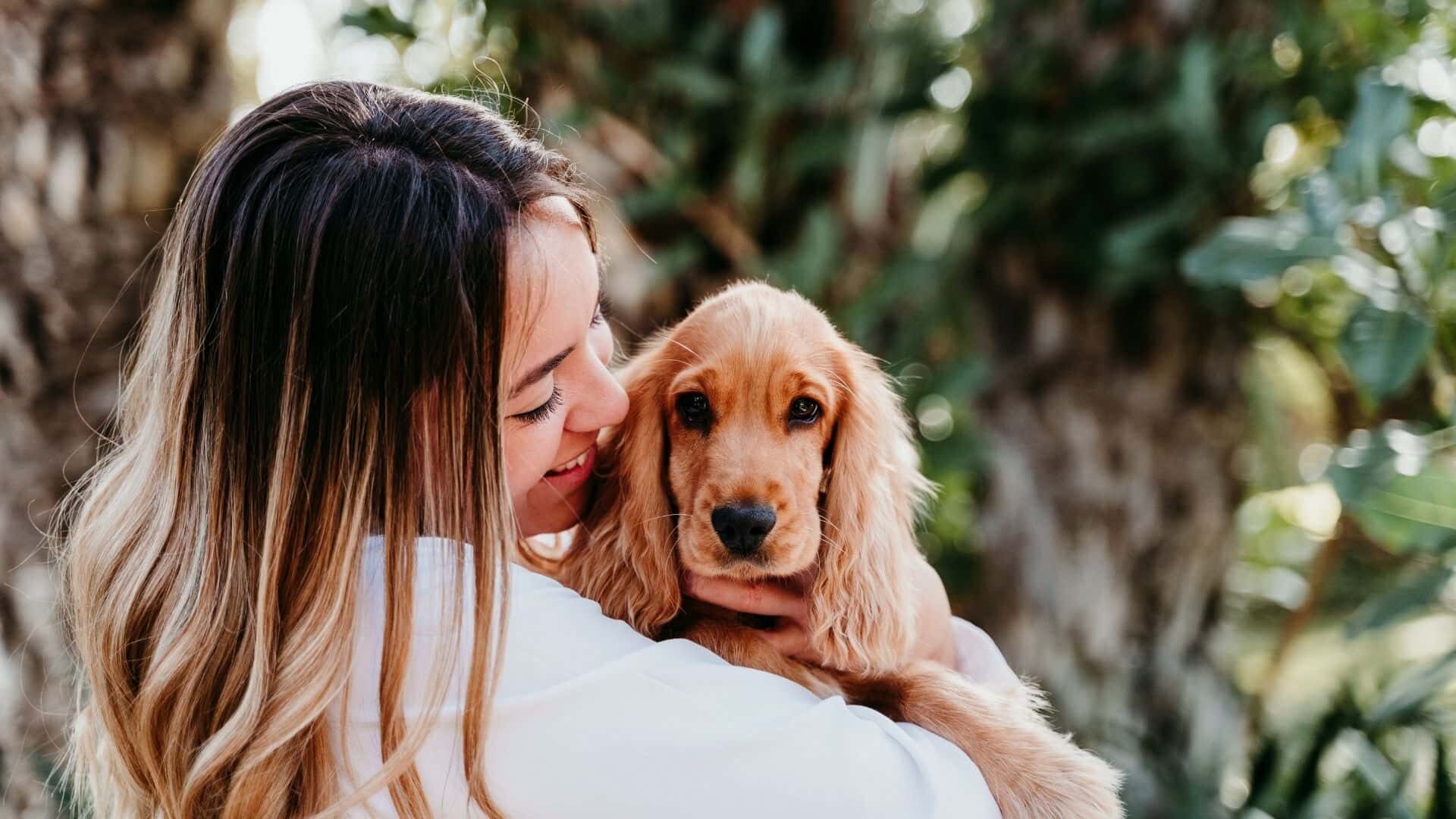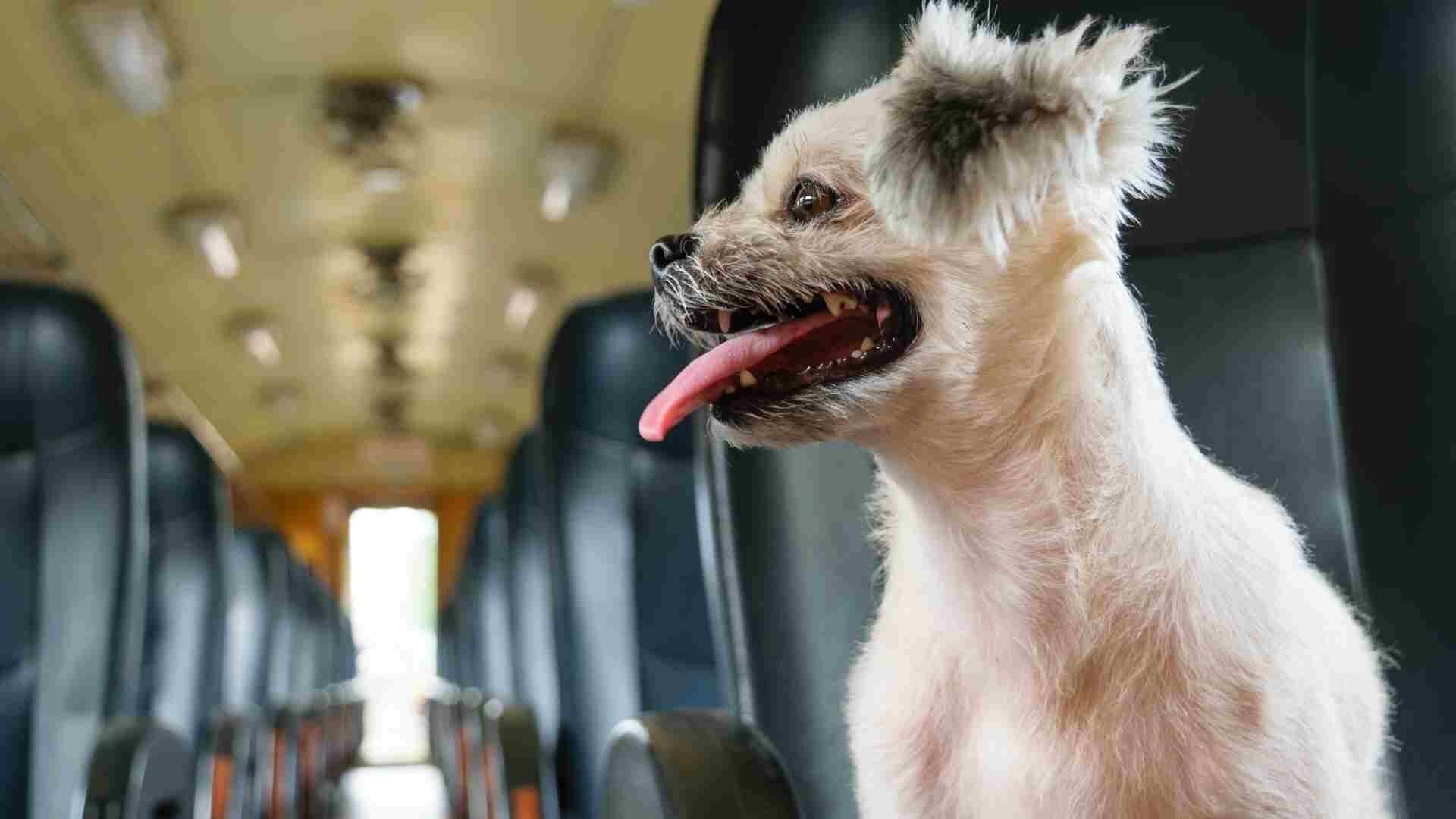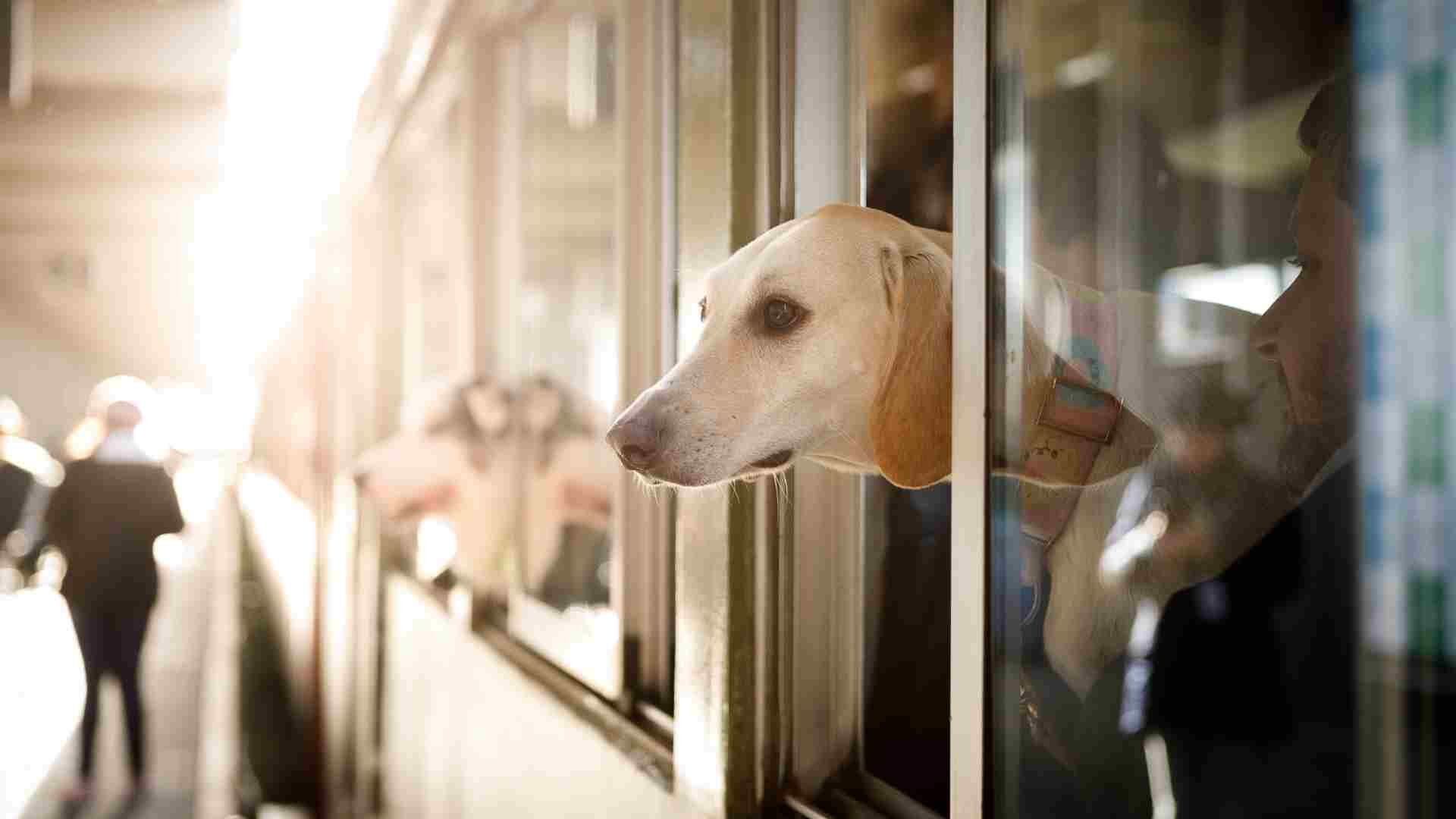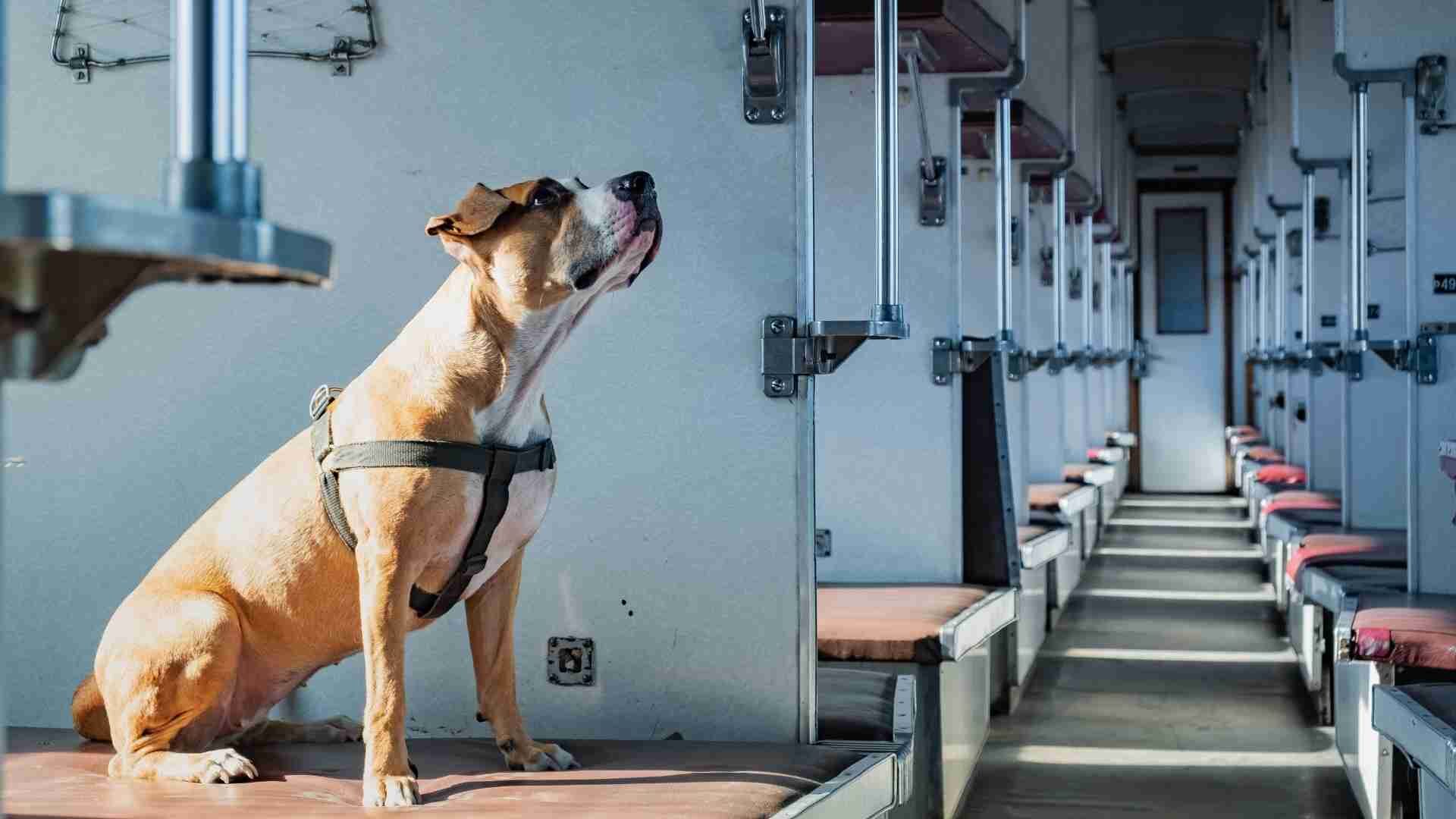If you plan to take your pet on a train, you must know how much it is for a dog on a train. But can you take your dog on a train? Keep reading to find out more.
Dogs are welcome to accompany you on the train for free if they do not irritate or risk other passengers. A limit of two dogs is allowed per passenger, but they must be kept on a leash or in a dog crate.
If you require to travel with more than two animals, you should verify with the Train Operating Company in charge of your service since you may be charged a surcharge. Your pets are not permitted to jump on the chairs, even if they might do it at home. They are only for paying passengers.
There are some ground rules to follow when traveling by rail with your dog. If you’re traveling internationally or over a long distance, travel insurance should always be considered in addition to your dog insurance.
What are the rules for bringing a dog on board?

Although dogs are permitted on most trains, national rail has established some guidelines to guarantee the comfort and safety of all passengers.
Some of the rules for bringing a dog on a train are listed below.
- Throughout your travel, have your dog on a leash.
- Passengers may carry up to two dogs for free, but there may be an extra charge if they bring more.
- Non-leashed dogs must be kept in secured pet carriers or crates.
- To prevent escape, any pet carrier must be rigid but not open, and the dog must be capable of standing and lying down comfortably.
- Unless they’re service dogs, dogs aren’t permitted in restaurant automobiles.
- Dogs are not permitted to sit in seats.
- Even animals in pet carriers are not permitted on seats, and if you do, you may be penalized for an extra occupied seat.
- Dogs are allowed on some sleeper trains, such as the Caledonian Sleeper, but you must check ahead. There will be a fee for heavy-duty cleaning. Assistance dogs are exempt from this fee.
- Because of its size or behaviour, train companies have the right to refuse carriage or admittance to any animal (excluding assistance dogs). You may be told to remove your dog from the train or railway grounds if it is causing a disturbance or discomfort to other travellers.
Are dogs allowed on UK trains?
Luckily, our railway service enables dogs, cats, and animals to ride in the UK, as one would expect from such a dog-loving country.
While all significant train operators do this, it may not be the scenario on all routes, so it’s always worth double-checking. If your journey involves a cross-city connection, be sure any buses, coaches, or trams you’ll be taking allow dogs to accompany you.
You don’t want to face any roadblocks in the middle of your trip.
Dogs are not permitted to travel with you on Eurostar. However, if you discover yourself traveling around Europe, there are many federal restrictions. Trainline offers a page that lists the guidelines for each country.
It is pretty convenient for pets because it makes multiple stops along the way, is properly aired, and has dedicated compartments in which the dog can remain with the family or with a single pet parent.
Most dog insurance plans also contain extra features like coverage for international travel. To learn more, contact your insurance company.
How much is it for dogs on a train?
Most services allow dogs and cats up to 20 pounds (total weight of pet and carrier) for travels up to seven hours. Each traveller is allowed two dogs for free.
Extra pets may be liable to up to 50% of the total adult cost, with a maximum charge of £5.00 for a single trip and £10.00 for a return trip. LNER, Avanti West Coast, GWR, and Greater Anglia are among the significant TOCs that follow this principle.

Both dogs and cats are permitted to travel with their owners as pets. Pet travel on the Adirondack, Maple Leaf, and Amtrak Cascades is not allowed in Canada; it is also prohibited on the Auto Train, Keystone Service, Pennsylvanian, San Joaquins, Capitol Corridor, and Thruway Connecting Operations.
Though assistance animals have traditionally been permitted on trains, the country’s train system announced in 2015 that dogs that meet the size requirements would be allowed on specific routes for $26.
What to do before travelling by train with dog?
When you first consider taking your dog on a train ride, you need to evaluate how they would react.
Is your dog laid-back and comfortable at your feet? Perhaps they’ve been taking public transportation since they were a puppy and consider it a normal part of life? If that’s the case, you’re all set and can begin preparing for your next journey.
But not everyone is so fortunate. Dogs, like humans, have a variety of personalities, likes, and dislikes. You must plan if your dog has never traveled by train previously, is uneasy around strangers, or afraid of sudden loud noises.
Railway stations are frequently crowded, boisterous, and filled with various fresh and exciting odours for your four-legged companion.
Early socialization and introducing your puppy to as many unique experiences as feasible from an early age are crucial.
How to take dogs on a train?
Below listed and explained is a step-by-step guide to taking your dog on trains.

- To ensure a reserved seat, purchase your ticket in advance by contacting your rail service. You also can do this on the internet. Only five pets per train (and one pet per person) are permitted, so secure your reservation early to ensure a spot.
- Ensure they’re up-to-date on all vaccines and have a clean medical history. Before you depart, you’ll also need to sign an indemnity and pet release agreement, which confirms that your pet is vaccinated, fit, and not violent.
- Give them a thorough soak in the tub. Your pet should be at least eight weeks old, unscented, non-disruptive, and not require any attention while traveling.
- Your pet must remain in a carrier under the seat on all occasions. As a result, make sure you have a decent, comfortable pet carrier (rigid or soft-sided) leakproof and well-ventilated.
- You must arrive somewhat earlier at stations with a ticket office and check yourself and your dog companion in (or cat friend). Ensure you took all the necessary papers. The conductor will examine the documents at unstaffed stations.
How to prepare for a dog’s train trip?
Traveling by train with your beloved dog can be a lovely experience, but it also comes with its own set of problems and perils.
Below listed are recommended tips to prepare your dog for a train trip.
1. Reward positive behavior.
When your dog appears relaxed and obeys orders like “sit” and “settle,” give them a positive reward. This can be done with tips or strokes, with the goal of rewarding calm behaviour.
2. Recognize when they’re in a bad mood.
Keep a close eye out for any signs that your dog is uneasy. Extreme panting, lip licking, constant pacing, biting the lead, curling their tail between their knees, and whining are examples of these behaviours. Note that behaviours that appear normal in other situations (such as drooling before dinner) may indicate uneasiness when your dog is on the train; if you suspect your dog is uneasy, don’t hesitate to get off. It’ll all work out!
3. Introduce them to each other in a caring manner.
Encourage your dog to become accustomed to the station by arriving early. Proceed to the fare gates and the station once they’ve become used to the ticket hall. Consider taking them on a few calmer excursions before intending to go on a crowded rush-hour service.
4. Check the limitations imposed by trains.
Sadly, you will not be able to travel with your pet in first class, business class, or a sleeping compartment.
Regrettably, your vacation must be limited to seven-hour segments, counting transfers. (Assume this is so your pet can pee and extend their legs.)
5. Travel sickness.
Many dogs, like people, are good travellers, whereas others, even on short trips with only a few stops, might become worried and unwell. Frequent drooling, panting, swallowing, nervousness and shaking, retching, or vomiting are all indicators to look out for. On a crowded, hot train, you wouldn’t want to cope with travel sickness.
6. Consider pet hotels.
If you’re going a greater distance, it’s preferable to travel in small bursts (up to the authorized seven hours) and find a decent pet motel for the night before continuing the next day.
The signs described below can help you determine if your dog is nervous on the train.
- Pacing
- Excessive panting is a sign in which a dog pants excessively
- Excessive yawning and lip licking
- Folded earlobes
- Their tails are tucked between their thighs.
- The whites of the eyes are excessively visible.
- They’re raising their paws
- Other vocalizations, such as barking
- Sniffing or scratching excessively could indicate that they’re attempting to distract them.
- Lead is being chewed.
How to train your dog to travel on a train?
Any training program should start with exposing your dog to the entire railway experience, in short, relaxing bursts. It’s pointless to go too quickly, too soon.

Below listed are recommended tips to train your dog for its train trip.
- Begin by taking them for a tour around the ticket hall to acclimate them to the crowd. Once they sit or look at ease, a sweet treat or a kind word is a terrific way to encourage this desired behaviour successfully.
- If you can instruct your dog to obey your instructions in such a crowded situation, train travel will be much easier and safer.
- Try and introduce them to the ticket barriers after you’ve dealt with the dangers of the ticket hall. These might be hard, so plan how you’ll handle them (for instance, who’ll go through first) while carrying bags and tickets!
- You can then step up to taking your initial travel together once you’ve gained confidence at the station. If feasible, start with a brief train ride and observe how your dog behaves before gradually increasing the amount of time spent on trains.
- You may need to spend additional time socializing your dog prior, based on their temperament and what they’re used to. It’s not just with strangers; it’s also with other pets and youngsters.
- Call your veterinarian or a nearby dog trainer if you have any concerns to see whether your dog requires additional assistance. And if you’re thinking about buying a harness or a muzzle for your dog to wear on the trip, make sure they’re used to it before you leave.
- If you have dog insurance coverage, contact their customer service number for assistance. All calls are answered by trained veterinary nurses with at least three years of expertise.
Watch Taking your dog on a train in Europe | Video
Below listed are five frequently asked questions (FAQs) in the context of “how much is it for a dog on a train?” followed with appropriate answers.
Is it possible to take your dog on a train?
Most railways still permit dogs on board, and there are some guidelines in place; people are required to follow them. There is no extra payment for taking dogs with you; up to two dogs can be carried for free. There will be an extra payment if there is more than one dog. While traveling, keep your dog on a leash.
How will I be able to travel with my large dog?
If their car seats do not have standard ties, dogs must use harness-like straps over their heads or headrests. Large dogs should ride in the back of the car, in a fastened seat in a box. Large pets are prohibited from travelling by airlines.
Is it allowed for me to take my Labrador on a train?
Labradors, boxers, German shepherds, and other larger dogs may be transported in AC First Class or First Class for only up to 12 litres with humans. A person can only board a train if the cabin is full. The traveller with the parcel office number can make a reservation for your dog at a packaged office.
What’s the temperature like on the trains?
Sadly, especially during the summer, crowded trains can become extremely hot and uncomfortable – mainly if there are no air conditioners or it is damaged. Dogs can quickly become hot, compounded by tension and anxiety, so keep an eye on them.
Are large dogs permitted on trains in the United Kingdom?
Your two small pets, up to a limit of two per passenger, may ride with you about all British trains for a charge. You must verify that dogs, cats, and other small animals do not endanger or disturb other travellers or train personnel. A dog should never be left outdoors alone, even if it is in a carrier.
Conclusion

This article explained the context of traveling with dogs on a train. The article covers the potential rules for bringing a dog on the train. Moreover, tips to train and prepare your dog to travel on trains were also discussed. Frequently asked questions on getting your dog on the train are also answered.
Bottom up
Please comment below about your ideas and share this “How to Travel with Your Dog on a Train: Guide with Tips” article with your friends.
Stay tuned with our website to find out more exciting stuff. Don’t forget to check out our previous articles too.
Until the, Read about, Top 20 Foods for Dogs with Sensitive Stomach: Guide





